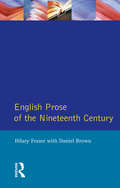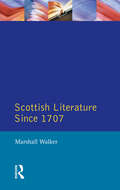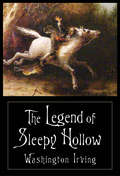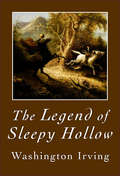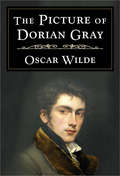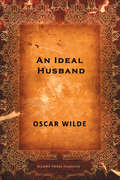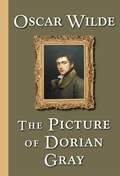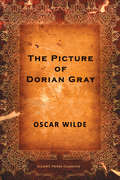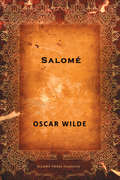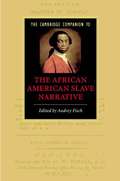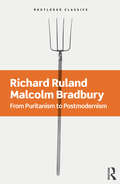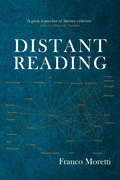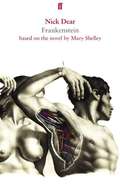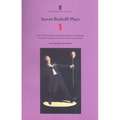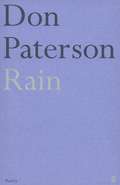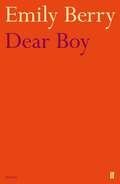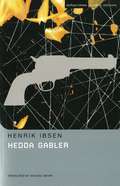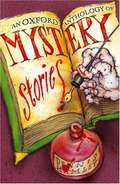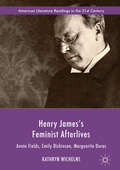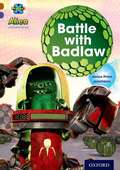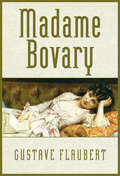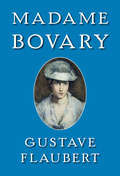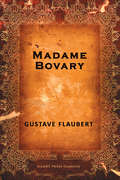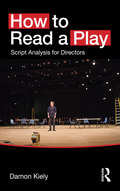- Table View
- List View
English Prose of the Nineteenth Century (Longman Literature In English Series)
by Daniel Brown Hilary FraserHilary Fraser provides a comprehensive and thorough survey of English prose in the nineteenth century which draws from a wide variety of fields including art, literary theory and criticisim, biography, letters, journals, sermons, and travel reportage. Through these works the cultural, social, literary and political life of the twentieth century - a period of great intellectual activity - can be charted, discussed and assessed.For the first time, an inclusive critical survey of nineteenth-century non-fiction is presented, that traces the century's ideological and cultural upheavals as they are registered in the literary textures of some of its most widely read and influential writings.The book explores the relations between writers who are generally perceived as occupying different discursive spheres, for example between John Stuart Mill, Florence Nightingale and Mrs Beeton; between Cardinal Newman, Elizabeth Gaskell and Hannah Cullwick; and between Charles Darwin, David Livingstone and Henry Mayhew. The establishment and development of different genres and their interactions over the century are clearly mapped. The genre of the periodical essay, a distinctively modern and flexible form catering to the mass readership, is the subject of the introduction, and then more specialist fields are discussed, covering scientific writing, travel and exploration literature, social reportage, biography, autobiography, journals, letters, religious and philosophical prose, political writing and history.
Scottish Literature Since 1707 (Longman Literature In English Series)
by Marshall WalkerMarshall Walker's lively and readable account of the highs and lows of Scottish literature from this important date to the present addresses the important themes of democracy, power and nationhood. Disposing of stereotypical ideas about Scotland and the Scots, this fresh approach to Scottish literature provides a critical interpretation of its distinctive style and presents the reader with an informative introduction to Scottish culture. Coverage includes the Scottish enlightenment and the world of Boswell and David Hulme to the 'Scottish Renaissance', associated with Hugh MacDiarmaid. Developments in the contemporary literary scene include John McGrath's theatre Company and the fiction and poetry of Alaistar Gray and Ian Crichton Smith. Particular attention is given to the work of Scottish women writers such as Lady Grizel Baillie and Liz Lochhead, who have been much neglected in previous literature.
The Legend of Sleepy Hollow
by Washington IrvingThe Legend of Sleepy Hollow, along with its companion piece, Rip Van Winkle is one of the best-known short stories to have come from America—though written while Irving was living abroad in England. Best enjoyed at Hallowe'en! The story is set in 1790 in the countryside around the Dutch settlement of Tarry Town (historical Tarrytown, New York), in a secluded glen called Sleepy Hollow. Sleepy Hollow is renowned for its ghosts and the haunting atmosphere that pervades the imaginations of its inhabitants and visitors. Some residents say this town was bewitched during the early days of the Dutch settlement. Other residents say an old Native American chief, the wizard of his tribe, held his powwows here before the country was discovered by Master Hendrick Hudson. The most infamous spectre in the Hollow is the Headless Horseman, said to be the ghost of a Hessian trooper that had his head shot off by a stray cannonball during "some nameless battle" of the American Revolutionary War, and who "rides forth to the scene of battle in nightly quest of his head".
The Legend of Sleepy Hollow
by Washington IrvingThe Legend of Sleepy Hollow, along with its companion piece, Rip Van Winkle is one of the best-known short stories to have come from America—though written while Irving was living abroad in England. Best enjoyed at Hallowe'en! The story is set in 1790 in the countryside around the Dutch settlement of Tarry Town (historical Tarrytown, New York), in a secluded glen called Sleepy Hollow. Sleepy Hollow is renowned for its ghosts and the haunting atmosphere that pervades the imaginations of its inhabitants and visitors. Some residents say this town was bewitched during the early days of the Dutch settlement. Other residents say an old Native American chief, the wizard of his tribe, held his powwows here before the country was discovered by Master Hendrick Hudson. The most infamous spectre in the Hollow is the Headless Horseman, said to be the ghost of a Hessian trooper that had his head shot off by a stray cannonball during "some nameless battle" of the American Revolutionary War, and who "rides forth to the scene of battle in nightly quest of his head".
The Picture of Dorian Gray
by Oscar WildeOscar Wilde's only novel. Dorian Gray sells his soul in a bid to maintain eternal youth and beauty. Only his portrait will age. As with all such bargains, however, there will be a reckoning.
An Ideal Husband: A Play
by Oscar WildeSecrets and political intrigue threaten to destroy the marriage of Sir Robert and Lady Chiltern. Believing her husband to be "ideal," Lady Chiltern is unwilling to accept that their life has been built on a shady financial deal in Sir Robert's past, and that Sir Robert's mistakes are about to be made public by Mrs. Cheveley. Only the intercession of Lord Goring can bring a halt to Mrs. Cheveley's schemes and reconcile Lady Chiltern with her ideal husband.
The Picture of Dorian Gray
by Oscar WildeOscar Wilde's only novel. Dorian Gray sells his soul in a bid to maintain eternal youth and beauty. Only his portrait will age. As with all such bargains, however, there will be a reckoning.
The Picture of Dorian Gray
by Oscar WildeDorian Gray believes that the true value of life is revealed only in the pursuit of beauty. As a result, Dorian sells his soul so that a beautiful painting of him will age, while he remains forever young.
Salomé
by Oscar WildeAs a reward for dancing the dance of the seven veils, Salomé asks her stepfather, Herod, for the head of John the Baptist on a silver platter. Because of its depiction of Biblical scenes on stage, Oscar Wilde's one-act play was highly controversial when it was first performed in 1896. It is now considered to be one of the artist's greatest works, and continues to be performed in modern times.
The Cambridge Companion To The African American Slave Narrative (PDF)
by Audrey A. FischThe slave narrative has become a crucial genre within African American literary studies and an invaluable record of the experience and history of slavery in the United States. This Companion examines the slave narrative's relation to British and American abolitionism, Anglo-American literary traditions such as autobiography and sentimental literature, and the larger African American literary tradition. Special attention is paid to leading exponents of the genre such as Olaudah Equiano, Frederick Douglass and Harriet Jacobs, as well as many other, less well known examples. Further essays explore the rediscovery of the slave narrative and its subsequent critical reception, as well as the uses to which the genre is put by modern authors such as Toni Morrison. With its chronology and guide to further reading, the Companion provides both an easy entry point for students new to the subject and comprehensive coverage and original insights for scholars in the field.
From Puritanism to Postmodernism: A History of American Literature (Routledge Classics)
by Richard Ruland Malcolm BradburyWidely acknowledged as a contemporary classic that has introduced thousands of readers to American literature, From Puritanism to Postmodernism: A History of American Literature brilliantly charts the fascinating story of American literature from the Puritan legacy to the advent of postmodernism. From realism and romanticism to modernism and postmodernism it examines and reflects on the work of a rich panoply of writers, including Poe, Melville, Fitzgerald, Pound, Wallace Stevens, Gwendolyn Brooks and Thomas Pynchon. Characterised throughout by a vibrant and engaging style it is a superb introduction to American literature, placing it thoughtfully in its rich social, ideological and historical context. A tour de force of both literary and historical writing, this Routledge Classics edition includes a new preface by co-author Richard Ruland, a new foreword by Linda Wagner-Martin and a fascinating interview with Richard Ruland, in which he reflects on the nature of American fiction and his collaboration with Malclolm Bradbury. It is published here for the first time.
Distant Reading
by Franco MorettiWINNER OF THE NATIONAL BOOK CRITICS CIRCLE AWARD How does a literary historian end up thinking in terms of z-scores, principal component analysis, and clustering coefficients? The essays in Distant Reading led to a new and often contested paradigm of literary analysis. In presenting them here Franco Moretti reconstructs his intellectual trajectory, the theoretical influences over his work, and explores the polemics that have often developed around his positions. From the evolutionary model of "Modern European Literature," through the geo-cultural insights of "Conjectures of World Literature" and "Planet Hollywood," to the quantitative findings of "Style, inc. " and the abstract patterns of "Network Theory, Plot Analysis," the book follows two decades of conceptual development, organizing them around the metaphor of "distant reading," that has come to define--well beyond the wildest expectations of its author--a growing field of unorthodox literary studies. From the Trade Paperback edition.
Frankenstein, Based On The Novel By Mary Shelley (PDF)
by Nick DearSlowly I learnt the ways of humans: how to ruin, how to hate, how to debase, how to humiliate. And at the feet of my master I learnt the highest of human skills, the skill no other creature owns: I finally learnt how to lie. Childlike in his innocence but grotesque in form, Frankenstein's bewildered creature is cast out into a hostile universe by his horror-struck maker. Meeting with cruelty wherever he goes, the friendless Creature, increasingly desperate and vengeful, determines to track down his creator and strike a terrifying deal. Urgent concerns of scientific responsibility, parental neglect, cognitive development and the nature of good and evil are embedded within this thrilling and deeply disturbing classic gothic tale. Frankenstein, based on the novel by Mary Shelley, premiered at the National Theatre, London, in February 2011.
Steven Berkoff - Plays 1: East; West; Greek; Sink The Belgrano!; Massage Lunch; The Bow Of Ulysses; Sturm Und Drang
by Steven BerkoffSteven Berkoff is a phenomenon. Among the artists working in the theatre today he is probably the most theatrical - his special combination of speech, movement and spectacle is uniquely powerful. This first collection of his plays includes East, described by Berkoff as 'an outburst or revolt against the sloth of my youth and a desire to turn a welter of undirected passion and frustration into a positive form'. Also included in this collection are the plays West and Sink the Belgrano!
Rain (PDF)
by Don PatersonIn this, his first volume of original verse since the award-winning Landing Light, Don Paterson is found writing at his most memorable and direct. In an assembly of masterful lyrics and monologues, he conjures a series of fables and charms that serve both to expose us to the unsettling forces within the world and simultaneously offer some protection against them. Whether outwardly elemental in their address, or more personal in their direction, these poems - to the rain and the sea, to his young sons or beloved friends - never shy from their inquiry into truth and lie, embracing everything in scope from the rangy narrative to the tiny renku. Rain, which includes the winner of this year's Forward Prize for the Best Individual Poem and an extended elegy for the poet Michael Donaghy, is Don Paterson's most intimate and manifest collection to date.
Dear Boy (PDF)
by Emily BerryDear Boy is the dramatic and inventive debut by Emily Berry. These characterful, intelligent and darkly witty poems explore lives lived strangely in unusual worlds, through a series of deft and seductive soliloquies. In a collection with a taste for ventriloquy and wickedness, and a flair for vocal cross-dressing, the balance of power is always shifting in an unexpected direction - an ing#65533;nue masquerades as a femme fatale, a doctor appears more disturbed than his patient, and parents seem more unruly than their children. Eccentric, intimate, arch, anxious, decadent and sometimes mournful, the book's confiding, conversational voices tell stories recognisable and refracted, carried along by the undercurrent on which the collection ebbs and rides: the anguish and energy brought about by a long-distance love affair, which propels and terrorises and ultimately unites the work. Dear Boy is an irresistible and enlivening collection by a new poet of startling and various gifts.
Hedda Gabler (PDF)
by Henrik Ibsen Michael Meyer David Thomas Chris Megson Jenny StevensHedda is an intelligent and ambitious woman, trapped in the stifling environment of a bourgeois 19th-century marriage. When writer Eilert Loevborg, an old flame returns to Hedda's life with a masterpiece that might threaten her husband's career, Hedda decides to take drastic and fatal action. Universally condemned in 1890 when it was written, Hedda Gabler has since become one of Ibsen's most frequently performed plays. Its title role is elusive and complex: Hedda is an intelligent and ambitious woman, who has no means of finding personal fulfilment in the stifling world of late nineteenth-century bourgeois society. Too frightened of scandal to become involved with a brilliant, wayward writer, she opts for a conventional but loveless marriage in the hope of finding surrogate satisfaction through her husband's career. Blending comedy and tragedy disconcertingly together, Ibsen probes the thwarted aspirations and hidden anxieties of his characters against a background of contemporary social conditions and attitudes.
Oxford Anthology Of Mystery Stories
by Dennis HamleyFrom creepy school computers to bungling bank robbers; from lost villages to deadly Christmas presents. . . Funny and serious, exciting and intriguing, here are fourteen wonderful new mystery stories to perplex and amaze you.
Henry James's Feminist Afterlives: Annie Fields, Emily Dickinson, Marguerite Duras
by Kathryn WichelnsThis book explores Henry James’s negotiations with nineteenth-century ideas about gender, sexuality, class, and literary style through the responses of three women who have never before been substantively examined in light of their relationships to his work. Writing in different times and places, Annie Fields, Emily Dickinson, and Marguerite Duras nevertheless share complex navigations of womanhood and authorship, as well as a history of feminist scholarly responses to their work. Kathryn Wichelns draws upon James’ correspondence with Fields, as well as Dickinson’s and Duras’s revisions of his fiction, to offer a new understanding of gender-transgressive elements of his project. By contextualizing his writing within a diverse set of feminist perspectives, each grounded in a specific time and place, as well as nineteenth-century views of queer male sexuality, Wichelns demonstrates the centrality of Henry James’s ambivalent identifications with women to his work.
Henry James's Feminist Afterlives: Annie Fields, Emily Dickinson, Marguerite Duras
by Kathryn WichelnsThis book explores Henry James’s negotiations with nineteenth-century ideas about gender, sexuality, class, and literary style through the responses of three women who have never before been substantively examined in light of their relationships to his work. Writing in different times and places, Annie Fields, Emily Dickinson, and Marguerite Duras nevertheless share complex navigations of womanhood and authorship, as well as a history of feminist scholarly responses to their work. Kathryn Wichelns draws upon James’ correspondence with Fields, as well as Dickinson’s and Duras’s revisions of his fiction, to offer a new understanding of gender-transgressive elements of his project. By contextualizing his writing within a diverse set of feminist perspectives, each grounded in a specific time and place, as well as nineteenth-century views of queer male sexuality, Wichelns demonstrates the centrality of Henry James’s ambivalent identifications with women to his work.
Project X Alien Adventures: Brown Book Band, Oxford Level 11 Battle With Badlaw
by Janice PimmBlast off on the biggest micro-adventure yet with the popular Project X characters Max, Cat, Ant and Tiger and their new alien micro-friend, Nok. Carefully levelled and highly motivating, this book is ideal for independent reading. The micro-friends face Badlaw in a dramatic final showdown.
Madame Bovary
by Gustave FlaubertMadame Bovary is the debut novel of French writer Gustave Flaubert, published in 1856. The character lives beyond her means in order to escape the banalities and emptiness of provincial life. When first published, public prosecutors attacked the novel for obscenity. The resulting trial in January 1857 made the story notorious. After Flaubert's acquittal, Madame Bovary became a bestseller. A seminal work of literary realism, the novel is now considered Flaubert's masterpiece, and one of the most influential literary works in history. The British critic James Wood writes: "Flaubert established, for good or ill, what most readers think of as modern realist narration, and his influence is almost too familiar to be visible."
Madame Bovary
by Gustave FlaubertMadame Bovary is the debut novel of French writer Gustave Flaubert, published in 1856. The character lives beyond her means in order to escape the banalities and emptiness of provincial life. When first published, public prosecutors attacked the novel for obscenity. The resulting trial in January 1857 made the story notorious. After Flaubert's acquittal, Madame Bovary became a bestseller. A seminal work of literary realism, the novel is now considered Flaubert's masterpiece, and one of the most influential literary works in history. The British critic James Wood writes: "Flaubert established, for good or ill, what most readers think of as modern realist narration, and his influence is almost too familiar to be visible."
Madame Bovary
by Gustave FlaubertMadame Bovary is the debut novel of French writer Gustave Flaubert, published in 1856. The character lives beyond her means in order to escape the banalities and emptiness of provincial life. When first published, public prosecutors attacked the novel for obscenity. The resulting trial in January 1857 made the story notorious. After Flaubert's acquittal, Madame Bovary became a bestseller. A seminal work of literary realism, the novel is now considered Flaubert's masterpiece, and one of the most influential literary works in history. The British critic James Wood writes: "Flaubert established, for good or ill, what most readers think of as modern realist narration, and his influence is almost too familiar to be visible."
How to Read a Play: Script Analysis for Directors
by Damon KielyThe work done on a play before the first rehearsal, the first group reading or even the before the cast have met, can be crucial to the success of a production. Directors and dramaturgs must know how to analyze, understand and interpret a play or performance text if they hope to bring it to life on the stage. This book provides a broad range of tools and methods that can be used when reading a text, including: Lessons from the past. What can we learn from Aristotle, Stanislavsky, Meyerhold, Vakhtangov, Brecht and Harold Clurman? This section establishes the models and methods that underpin much of a director’s work today. A survey of current practices in Western theatre. A combination of research, interviews and observation of practical work addresses the main stages in understanding a play, such as getting to know characters, sharing ideas, mapping the action and grappling with language. A workbook, setting out twenty one ways of breaking down a play, from the general to the particular. Contributions, reflections and interjections from a host of successful directors make this the ideal starting point for anyone who wants to direct a play, or even devise one of their own. This wide range of different approaches, options and techniques allows each reader to create their own brand of play analysis.
